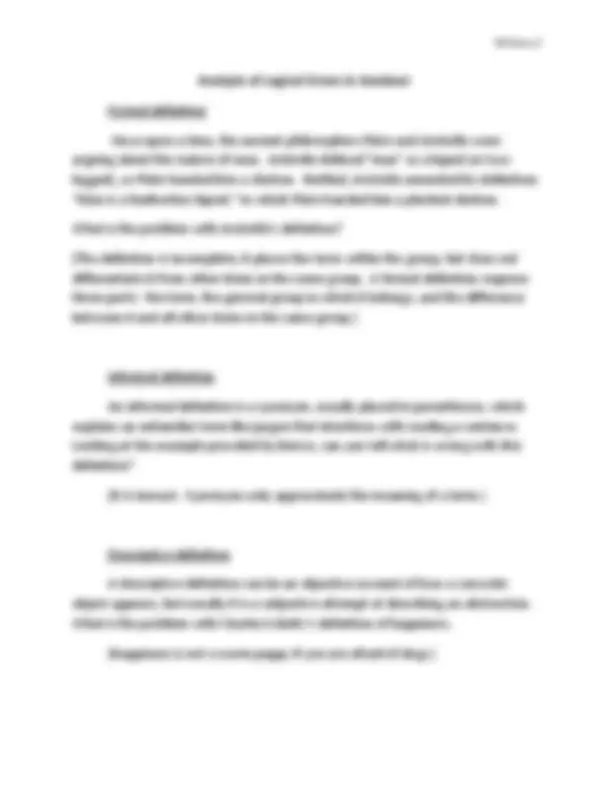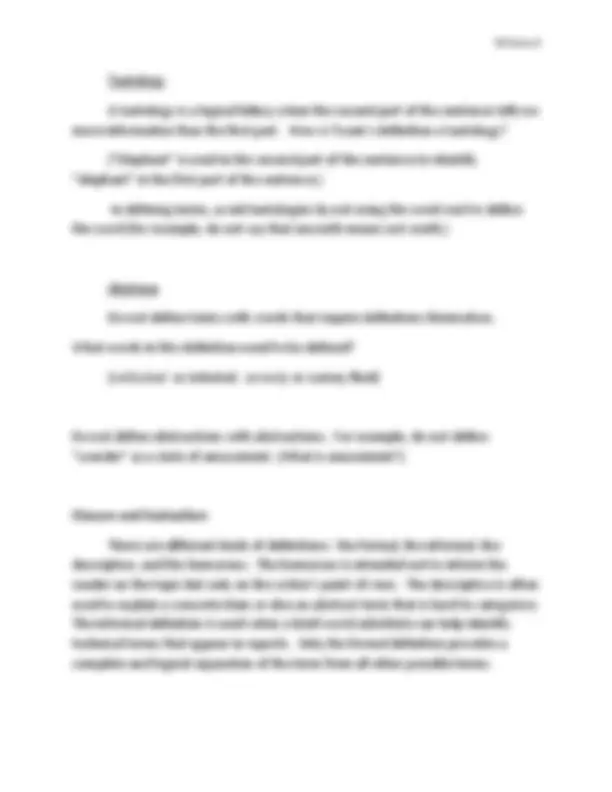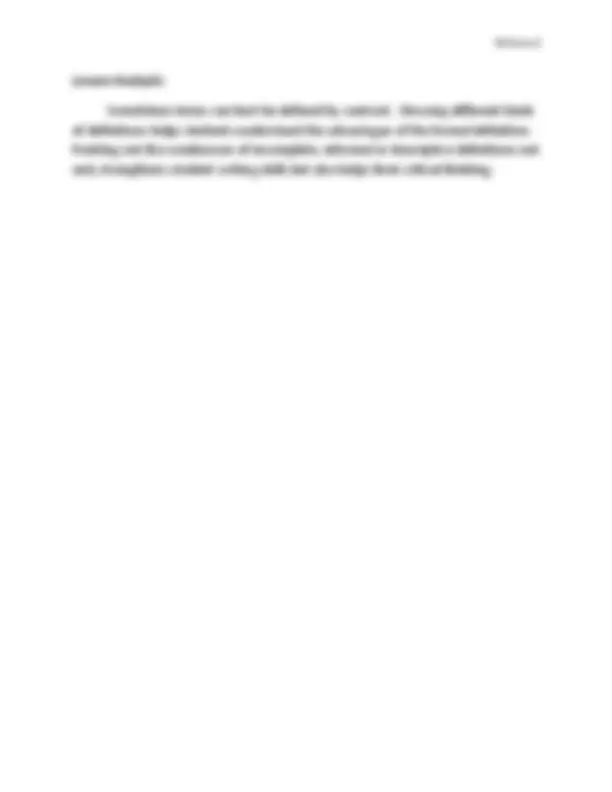





Study with the several resources on Docsity

Earn points by helping other students or get them with a premium plan


Prepare for your exams
Study with the several resources on Docsity

Earn points to download
Earn points by helping other students or get them with a premium plan
Community
Ask the community for help and clear up your study doubts
Discover the best universities in your country according to Docsity users
Free resources
Download our free guides on studying techniques, anxiety management strategies, and thesis advice from Docsity tutors
The informal definition is used when a brief word substitute can help identify technical terms that appear in reports. Only the formal definition provides a.
Typology: Study notes
1 / 5

This page cannot be seen from the preview
Don't miss anything!




Lesson Plan: Writing Definitions Ed Sams Department of English and Comparative Literature San José State University
Lesson: Writing definitions
Timeframe: 45 minutes
Target Audience: Students preparing to write a definition essay on the term “Wonder”
Materials needed: hand-outs
Objectives : After this lesson, students will be able to
Understand the different parts of a dictionary definition Distinguish between a formal and informal definition Distinguish between the denotation and connotation of a word Write a formal definition, emphasizing its three distinct parts, in a complete sentence.
Introduction to Lesson [5 minutes]:
Definitions are important rhetorical strategies that help develop thesis statements in expository prose. Remember exposition is writing that explains one’s topic and point of view. Defining terms helps readers focus on your topic and understand your point of view.
Procedure Plan: Review Handout
Step one: Distribute handouts Step two: Discuss the logical problems with each example
Definitions: Formal, Informal , & Implausible
Formal
Man, a featherless biped
Informal
Brute , n. See Husband. --Ambrose Bierce’s The Devil’s Dictionary
Descriptive
Happiness is a warm puppy. --Charles Schultz
Tautology
Adam called the elephant an elephant because that’s what it looked like. --Mark Twain
Abstruse
Cough: A convulsion of the lungs, vellicated by some sharp serosity. --Samuel Johnson’s Dictionary
3-Part Formula
Term Group Difference
Tautology A tautology is a logical fallacy when the second part of the sentence tells no more information than the first part. How is Twain’s definition a tautology?
[“Elephant” is used in the second part of the sentence to identify “elephant” in the first part of the sentence.]
In defining terms, avoid tautologies by not using the word root to define the word (for example, do not say that uncouth means not couth.)
Abstruse Do not define terms with words that require definitions themselves.
What words in this definition need to be defined?
[ vellicated or irritated , serosity or watery fluid]
Do not define abstractions with abstractions. For example, do not define “wonder” as a state of amazement. (What is amazement?)
Closure and Evaluation:
There are different kinds of definitions: the formal, the informal, the descriptive, and the humorous. The humorous is intended not to inform the reader on the topic but only on the writer’s point of view. The descriptive is often used to explain a concrete item or else an abstract term that is hard to categorize. The informal definition is used when a brief word substitute can help identify technical terms that appear in reports. Only the formal definition provides a complete and logical separation of the term from all other possible terms.
Lesson Analysis :
Sometimes terms can best be defined by contrast. Showing different kinds of definitions helps students understand the advantages of the formal definition. Pointing out the weaknesses of incomplete, informal or descriptive definitions not only strengthens student writing skills but also helps their critical thinking.